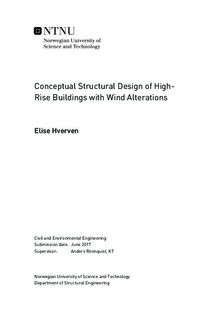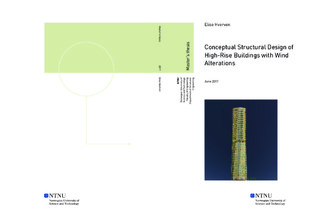| dc.description.abstract | The aim of this thesis is to develop a conceptual structural design for a tall building located in Oslo, Norway. For a structural engineering student, it is vital to reflect on how the structural system can enhance the architectural expression of the building. When a skyscraper is situated in Oslo, the governing load is wind. When adding alterations to a basic configuration, the building can be optimized structurally to withstand wind induced pressure, this also adds a unique architectonic expression of the building. Basic geometrical shapes, both with and without alterations, have been analyzed in computer software wind tunnel testing. As a result, the plan geometry and modifications over the vertical height are optimized for uniform wind loads. Due to the results from the wind tunnel testing, the hexagonal and octagonal models were further analyzed in the computer program ETABS. All together there were six models; the basic geometries, models with twisting over the vertical height, and models with tapering and twisting over the vertical height. In ETABS the models were exposed to earthquake and wind loads according to given National Standards. Consequently, the stiffness and flexibility of the structures under these loads was evaluated. Results from the computational program and further manually calculated results, have been compared to Norwegian thresholds within serviceability of structures. From these results, it is possible to conclude that the additional examined alterations will enhance the buildings performance under wind loading. The displacements are reduced, as well as the over-all volume of the load-resisting structure. The acceleration of the structures under wind loads are roughly equivalent for all the models. Consequently, twisting and tapering over the vertical height, as well as a reduced volume of the load-bearing structure, does not reduce the global stiffness of the structures. | |

